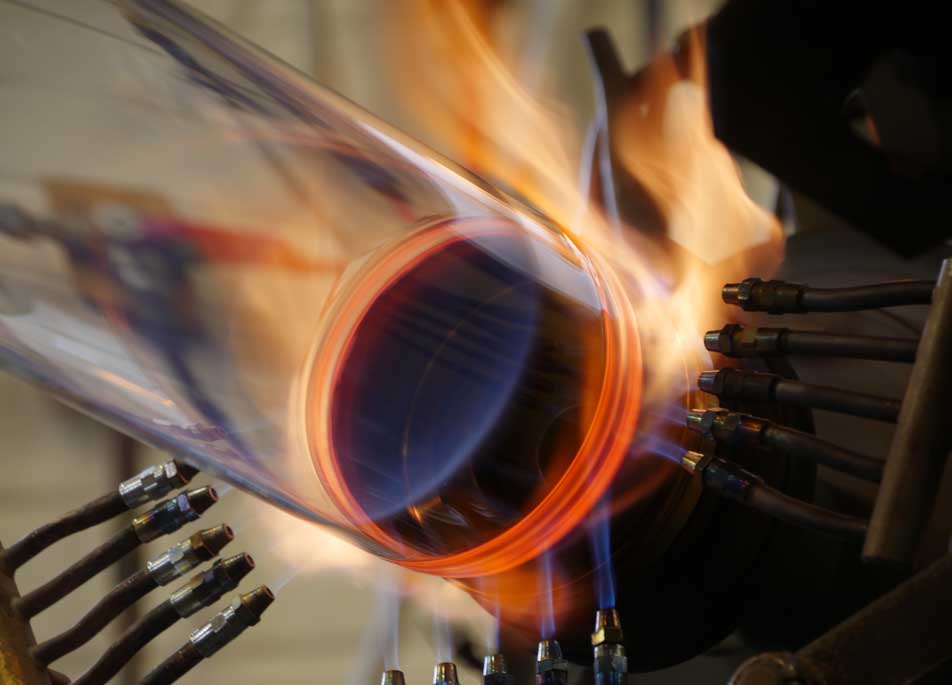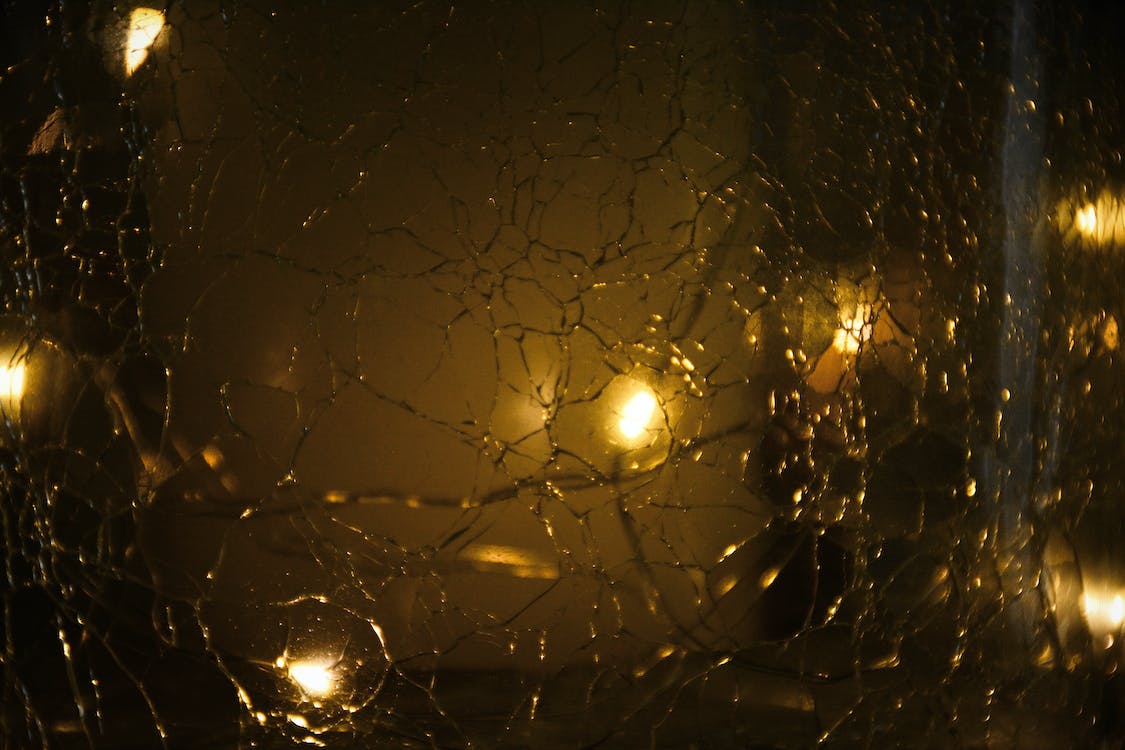Glass is a versatile and ubiquitous material that plays an integral role in our daily lives.
From windows and bottles to electronics and fiber optics, glass is utilized in numerous applications due to its transparency, chemical resistance, and unique aesthetic qualities.
One of the key aspects that determine its suitability for various purposes is its strength and durability.
Here at Moore’s Glassworks, we specialise in custom glass manufacturing and create a wide range of products that are used in many different settings, including the military and science.
Many of our products have special qualities when it comes to strength and durability and this blog will help you understand just how we achieve this through our manufacturing process.
Let’s take a look.

The Chemical Composition of Glass
Glass is mostly made up of silicon dioxide (SiO2).
While this is often the primary substance found in the production of glass, there are others that can be added to modify the properties of the glass and make it suitable for other purposes.
For example, in one of our vacuum viewport options, we can offer borosilicate glass which contains boron oxide (B2O3) in addition to the silicon dioxide. This gives it added strength and durability and makes it ideal to undergo the rigours of changing elements and temperatures inside a vacuum chamber without cracking.
Knowing which type of glass and what to add to make your glass always safe and up for the task at hand is a key part of manufacturing high quality products.
The Molecular Structure of Glass
While glass is a solid structure after it has been manufactured, the arrangement of atoms isn’t what you would expect.
Basically, whereas the atoms would be rigid and uniform in a solid, they are all jumbled inside glass. There is no pattern or order to the molecules, and this provides glass with some interesting properties.
When stress is added to glass, these molecules have space to move and disperse which can help to alleviate the stress in certain points.
This is also why glass often cracks but sometimes the crack doesn’t spread, as the disordered arrangement of the atoms impedes the breakage.
Glass is made up of silicon and oxygen atoms, and these work together perfectly to provide a material that is strong, durable, and capable of handling many different environments. These are called covalent bonds, and when together they form a three-dimensional network which contributes to the rigidity of glass.
Strengthening Techniques in Glass
Since the early days of glass blowing, the uses of the material have changed.
While it used to be used mostly for aesthetic pieces of art, it is now commonly used in many applications, from televisions to reading glasses.
Due to the ever-growing need for glass that these new uses promote, new measures are always been developed on how it can be more suitable and better fitted for the many roles it is needed to carry out.
One such method is tempering, which involves heating the glass to an extremely high temperature before quickly cooling it down. This makes the glass in questions stronger due to the compressive stress on the surface combining with the tension that is being maintained in the core.
Tempered glass is much more likely to survive under impact and thermal stress than ordinary glass, and if it is broken, will shatter into small pieces rather than long shards.
Another method is laminating.
This involves sandwiching a layer of polymer between two glass panels that will act as an adhesive and hold the two pieces of glass together.
What this means is that if the glass is to shatter, the glass doesn’t disperse, and dints instead of shattering completely.
This is a technique commonly used throughout many everyday applications such as car windshields to provide much more strength and safety to the person driving the car who shouldn’t be showered in broken glass in the case of an accident.
The Durability of Glass
As mentioned earlier, many of the products we specialise in, such as cathode ray tubes, multi pin stems, and PH electrode glass bodies, are used in various different settings.
This means that they may be exposed to chemicals and radiation, as well as having to withstand extreme temperatures and pressure.
Due to this, we always make sure our products are made to withstand the environment they are placed in. As mentioned earlier, elements can be added to the composition of the glass to improve it’s resistance to these factors, and this should lead to a long-lasting product that is sure to stand the test of time.
Without these measures taking place, there is a high chance that glass can discolour or crack and this can not only lead to it being unusable, but also to it being unsafe for the workers operating the equipment with the glass.
While the manufacture of the glass does play a big part in it’s durability, another important aspect is the maintenance process, and we always recommend that you look into the best ways of caring for your glass to ensure it is in always in a healthy condition.

Moore’s Glassworks
There are many factors that are at play when creating glass items that are strong, durable, and suited for the task at hand.
These methods of creating glass that is tough against impact and long-lasting have revolutionized the way glass is used throughout society.
We are always looking to grow our knowledge into the factors that can affect glass durability, such as thermal expansion and environmental conditions, and learning the best ways to counteract these factors is key in allowing us to produce glass products that are always high-quality and built to perform at the highest level.
With ongoing research and advancements in technology and the knowledge of this wonderful material, the science behind glass strength and durability continues to evolve, and who know what else glass will be able to used for in the future.
Want to know more about how we manufacture our glass products, or how we can assist with your latest projects, then why not get in touch with our team today.


Leave a Reply